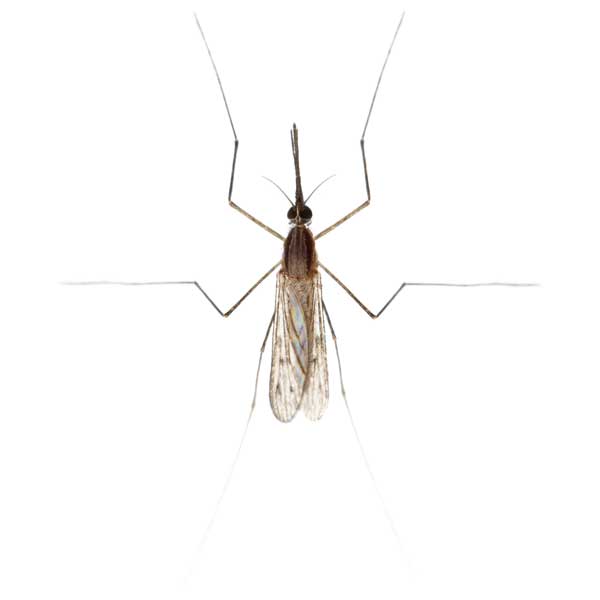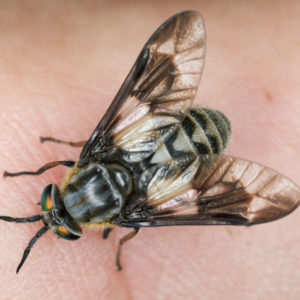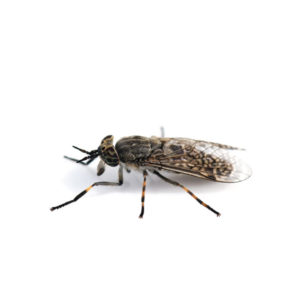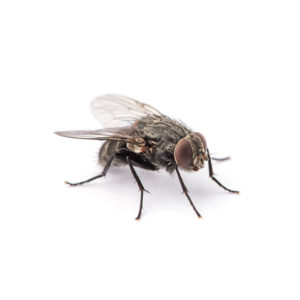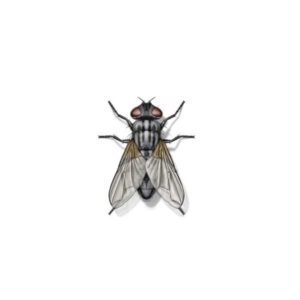Gnats and midges are common names for a large number of small, non-biting flies found throughout the United States. These flies typically breed in aquatic environments and can emerge from these sources in high numbers. Most species that affect homes and buildings are nighttime fliers that are attracted to the light on buildings. People are often troubled by the presence of these insects as they confuse them with mosquitoes. However, unlike mosquitoes, midges and gnats lack a biting needle, and because of this, they cannot spread disease. Even though they are harmless in terms of biting, their swarming behavior can significantly impact outdoor activities and indoor comfort.
Unsure on the type of fly you are dealing with? Take a look at the most common flies found in North Carolina to help identify the specific fly species.
Gnat / Midge Identification
What Do Gnats and Midges Look Like?
Gnats, with their diminutive size and often dark coloration, can be mistaken for fruit flies or even tiny mosquitoes. Non-biting midges, conversely, may exhibit a range of colors from gray to green and tend to swarm in larger numbers, especially in the evenings near light sources or water surfaces. Their presence is a telltale sign of moist conditions nearby, acting as a natural indicator of environmental health.
Signs of a Gnat or Midge Infestation
Signs of a non-biting gnat or midge infestation include the presence of large numbers of adult insects indoors or outdoors, small flying insects resembling mosquitoes, visible larvae in soil or organic matter, identification of breeding sites with excessive moisture or organic material, damage to plants, unpleasant odors from decaying organic matter, and increased indoor activity of gnats or midges near light fixtures or houseplants.
Habitat, Diet, Lifecycle & Bites
Where Do Gnats and Midges Live?
Gnats and midges typically inhabit moist environments rich in organic matter. They can be found near bodies of water, such as lakes, rivers, and streams, as well as in areas with decaying vegetation, compost piles, or damp soil. Indoors, they may infest potted plants, areas with high humidity like kitchens or bathrooms, or spaces with stagnant water, such as drains or leaky pipes.
Diet of Gnats and Midges
Non-biting gnats and midges primarily feed on decaying organic matter, including decomposing plant material, fungi, algae, and other microscopic organisms. As larvae, they often consume organic debris in soil, water, or rotting vegetation. As adults, they may feed on nectar, pollen, or other sugary substances. While some species may also consume small particles of decaying matter.
Life Cycle of Gnats and Midges
Both gnats and non-biting midges undergo a four-stage life cycle: egg, larva, pupa, and adult. Midges, particularly, lay their eggs in or on water surfaces, where the larvae, known as bloodworms due to their red coloration from hemoglobin, play a crucial role in aquatic ecosystems by processing organic matter. Gnats prefer moist soil or decomposing material for their larval stage, contributing to the decomposition process and nutrient cycling in terrestrial environments.
Gnat and Midge Bites
Non-biting gnats and midges do not typically bite humans or animals. If individuals experience bites resembling those of mosquitoes, it is likely caused by another insect species, as non-biting gnats and midges do not feed on blood.
Are Gnats and Midges Dangerous?
Beyond their nuisance, gnats and midges are not dangerous. However, their presence in large numbers can lead to mistaken concerns about biting insects, and in rare cases, individuals with severe allergies may react to their mere presence or the particulate matter they produce.
How to Get Rid of Non-Biting Gnats and Midges?
To get rid of gnats and midges, eliminate breeding sites by removing standing water and decaying organic matter. Keep areas clean and dry to reduce attractants. Install screens on windows and doors to prevent entry, and dispose of garbage promptly. Manage houseplants by repotting with fresh soil and removing dead leaves. These steps collectively help eliminate gnats and midges from your surroundings.
If you are dealing with a persistent gnat or midge problem on your property, contact your local fly exterminators.
Gnat and Midge Prevention Tips
- Regular Inspection: Regularly inspect your property for standing water, including saucers under plants, gutters, and flat roofs, where water can accumulate.
- Proper Plant Care: Overwatering is a common mistake that can lead to gnat problems. Ensure your plants are watered appropriately, allowing the soil surface to dry between waterings.
- Waste Management: Properly seal and regularly empty trash bins, especially those containing food waste or garden clippings, to avoid attracting gnats and midges.
Need help with Gnat / Midges (non-biting) control?
FAQs
How Long Do Non-biting Midges Last?
Non-biting midges typically have a lifespan of a few days to a week as adults, but their breeding cycles can produce new generations in as little as two weeks under ideal conditions, leading to prolonged periods of activity throughout the warmer months.
Managing Large Swarms
For large swarms of non-biting midges, reducing outdoor lighting during peak activity times and using fans to disrupt their flight patterns can provide temporary relief during outdoor activities.
Why the Sudden Surge?
A sudden increase in gnat or midge activity can often be traced back to recent changes in the environment, such as new water features, excessive rainfall leading to standing water, or changes in gardening and plant watering practices.

